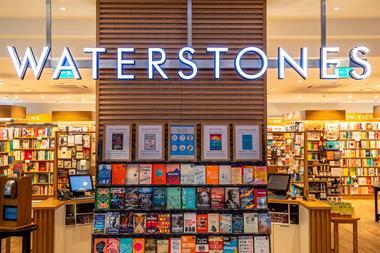Ensuring customers stay loyal to your brand has always been a cornerstone of successful retail. SAS’ Andrew Fowkes examines how retailers can make sure shoppers’ needs are being met
The consumer’s attention gets fragmented many times during any given day through advertisements and targeted ecommerce.
Due to this, the Future of Retail report by SAS describes “meeting the shopper where they are” as vital. This means putting the shopper at the centre of the experience through personalisation to meet all their needs, in a way that is beneficial to both the business and the consumer.
A personalised approach from brands has become something that 80% of customers expect, in fact the fastest-growing retailers generate more than 40% of their revenue through it, according to McKinsey.
But as competition is raised by more brands showing curated advertisements, retailers must create precision tailoring to break through the noise.
However, consumer data is becoming more and more protected, with Google phasing out third-party adverts in favour of privacy-preserving APIs, likely only the start of many moves to align with upcoming laws regarding information gathering. This means, for retailers, it can be hard to get the data you need to stand out.
“Retailers are sitting on a gold mine of information, which largely is still not being utilised to best effect”
Fortunately, businesses retain a great resource of relevant and detailed data from loyalty cards, cashier data, store data, and logistical and supplier data.
Retailers are sitting on a gold mine of information, which largely is still not being utilised to best effect.
By taking advantage of huge pools of historical data and analytics, retailers can bolster consumer retention and generate a clearer understanding of who their future customers could be, their likely interests and needs, and use this knowledge to stand out.
As a result, many retailers are now looking deeper into the customer data platform (CDP) concept to create their own 360-degree AI-based view of customers, craft journeys and deliver contextual personalisation in a sustainable way.
The use of modelling through AI will allow retailers to benefit the business in multiple ways – enrich their data to provide the best experience for customers, develop stronger and more resilient supply chains, and improve demand forecasting to better manage stock and inventory levels.
Analytics can also help drive sustainability through high-quality forecast capabilities on sales, supply chains and manufacturing efficiency, to give peace of mind to ecologically conscious consumers.
In the battle against fraud, advanced analytics and machine learning can improve the identification of genuine claims against fraudulent ones, ensuring customers get high-quality customer service while preventing crime.
SAS’ report on the Future of Retail covers all of these benefits and more with expert insights from many different backgrounds.
To learn more about data analytics in retail, download our report here.

Andrew Fowkes is retail solutions director within Europe, Middle East and Africa (EMEA) for the Global Retail Practice (GRP) of SAS




























